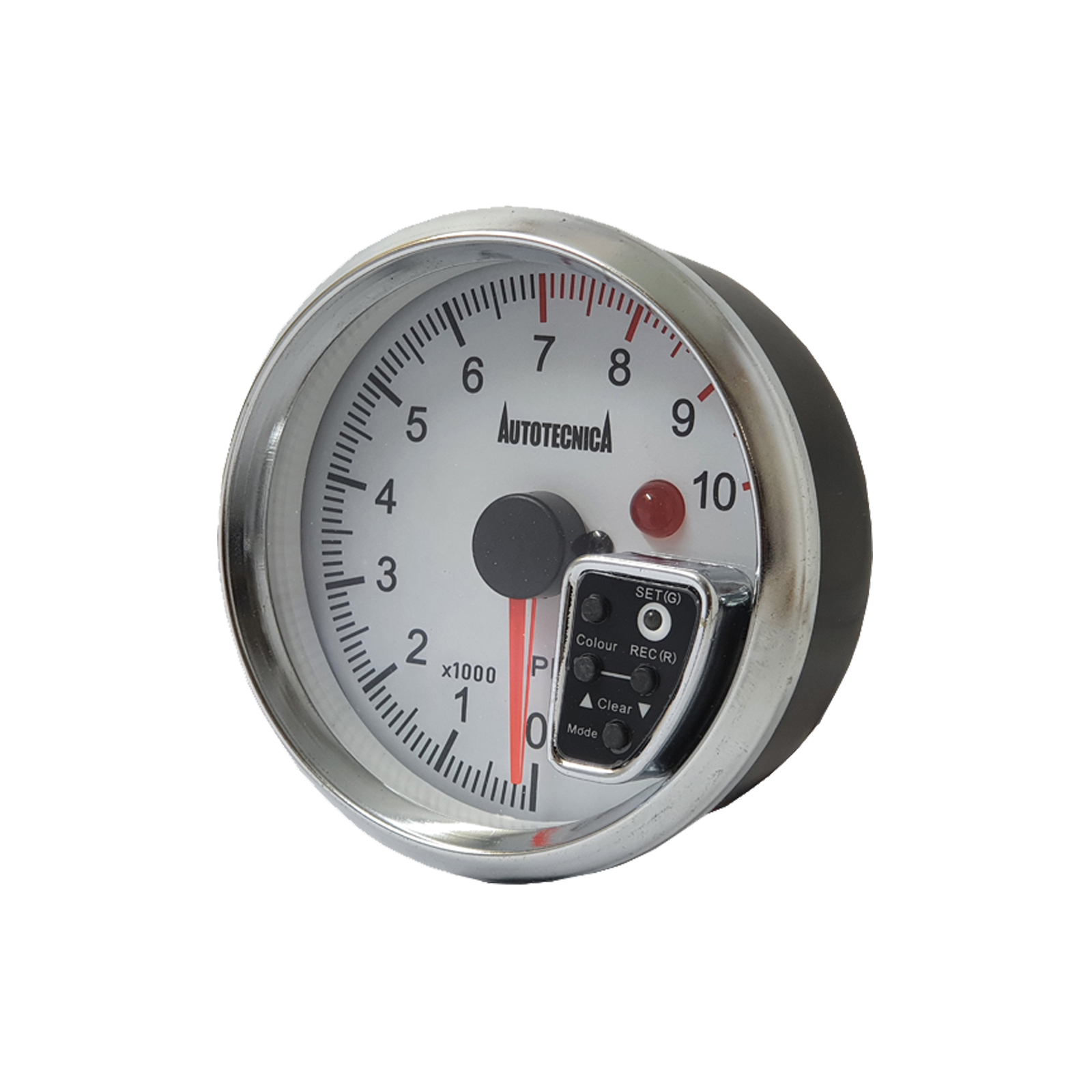The Benefits of Setting Up a Tachometer in Your Car
The Benefits of Setting Up a Tachometer in Your Car
Blog Article
The Relevance of a Tachometer in Checking Engine Speed and Efficiency in Automotive Applications
In the realm of auto design, the tachometer stands as a critical instrument in the driver's arsenal, giving a straight home window into the inner functions of an automobile's engine. Past its feature as a plain scale of changes per minute (RPM), the tachometer serves as a vital tool for enthusiasts and professionals alike, providing real-time understandings into engine performance and health and wellness. Recognizing the significance of this device goes beyond surface-level observations, diving right into the complex connection between engine rate, power result, and general driving experience. As we check out the diverse role of the tachometer in auto applications, a much deeper recognition for its effect on lorry characteristics and performance starts to arise.
Value of Keeping An Eye On Engine RPM
Keeping track of engine RPM, or transformations per min, is an important element of automotive maintenance and efficiency assessment. Engine RPM straight correlates with the speed at which the engine's crankshaft revolves, indicating exactly how quickly the engine is running.
Moreover, checking engine RPM is vital for efficiency evaluation in racing and high-performance automobiles. Maintaining optimal RPM levels is critical for achieving peak power outcome and velocity. Racers frequently use tachometers to ensure they are running within the excellent RPM range for maximum performance. In recap, checking engine RPM is not only important for discovering issues but also for optimizing engine performance in different vehicle applications.

Benefits of Real-Time Data
In automotive applications, real-time data plays an important function in supplying instantaneous insights right into the efficiency and problem of the automobile. By constantly keeping an eye on numerous specifications such as engine speed, temperature, gas intake, and more, real-time information supplies many advantages that add to improved efficiency and security when driving.
Additionally, real-time data helps with efficiency optimization by supplying instant feedback on driving routines and engine effectiveness. Motorists can adjust their habits in real-time based on this information to attain much better fuel economic climate and prolong the life-span of their car.

Furthermore, real-time information plays a crucial role in contemporary automotive diagnostics, allowing technicians to promptly diagnose and deal with breakdowns. This results in lowered downtime, lower upkeep costs, and eventually, boosted general lorry dependability and longevity (tachometer). By using the published here power of real-time data, vehicle stakeholders can make enlightened decisions that favorably influence both the efficiency and long life of the vehicle
Effect on Gear Shifts
The tachometer plays a vital duty in maximizing gear changes by giving real-time engine rate information to the driver. When approaching the redline on the tachometer, it signals the driver to upshift to prevent over-revving the engine and triggering potential damage.
Moreover, the tachometer aids in achieving smoother equipment changes, specifically in hand-operated transmissions. By checking engine speed, drivers can carry out equipment shifts at the optimal RPM range, reducing jerking activities and decreasing wear on the transmission components. This precision on duty changes not just boosts driving comfort but additionally adds to sustain efficiency.
Enhancing Gas Performance
Offered the critical role the tachometer plays in optimizing equipment shifts for efficiency and engine health and wellness, it directly contributes to making the most of fuel performance in automobile applications. By offering real-time feedback on engine speed, the tachometer aids chauffeurs in maintaining one of the most effective RPM range for gas economic climate. When drivers continually keep an eye on the tachometer and adjust their motoring practices accordingly, they can stay clear of unnecessary gas usage brought on by over-revving or carrying the engine.
Additionally, pop over here the tachometer aids chauffeurs recognize the most fuel-efficient equipment to be in at any kind of provided moment, preventing the engine from working harder than necessary. In conclusion, the tachometer serves as a valuable tool in improving gas performance by advertising optimal driving habits and determining areas for improvement in the vehicle's performance.

Taking Full Advantage Of Engine Longevity
The tachometer's role in keeping track of engine speed and efficiency is crucial in making sure the durability of vehicle engines. By utilizing the tachometer successfully, chauffeurs can enhance engine durability via conscious RPM monitoring. Consistently revving an engine too high can lead to too much deterioration on vital elements, such as the pistons, shutoffs, and bearings. With time, this can lead to decreased engine performance and possible malfunctions. Monitoring the tachometer enables chauffeurs to remain within the recommended RPM array for their automobile, avoiding unnecessary pressure on the engine and prolonging its life expectancy.

Conclusion
In conclusion, the tachometer plays a critical duty in keeping track of engine rate and performance in auto applications. By supplying real-time data on RPM, it enables reliable gear shifts, boosted fuel effectiveness, and made best use of engine long life. This device is essential for maintaining ideal engine performance and guaranteeing the total functionality of an automobile.
Report this page